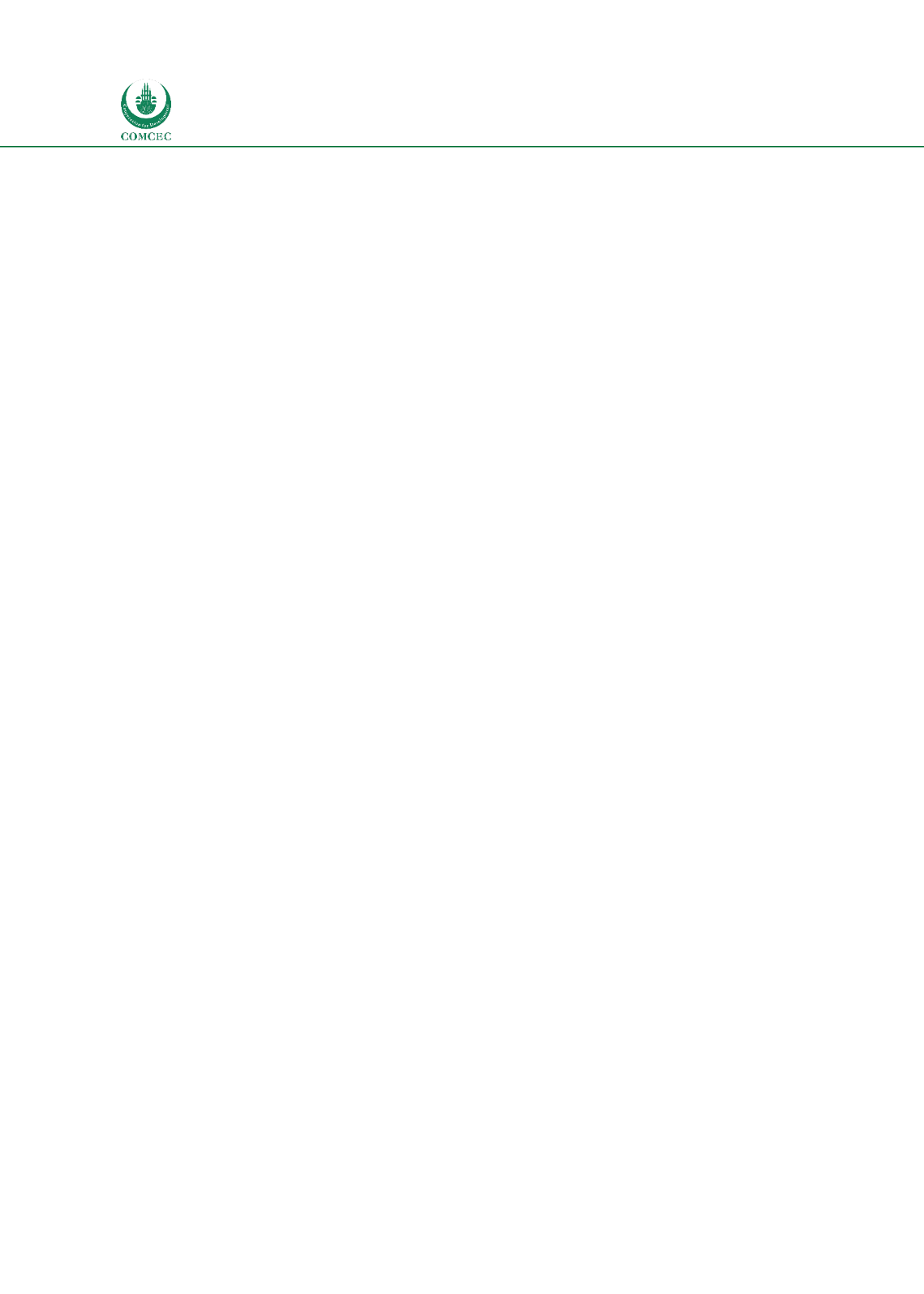

National and Global Islamic Financial Architecture:
Problems and Possible Solutions for the OIC Member Countries
148
structure; violation of Banking Law and the applicable regulations; and inefficient internal
audit, internal control and risk management systems. Accordingly, as part of the intervention
process, Banking Law No. 5411 Article 68 suggests ‘corrective measures’, Article 69 suggests
rehabilitating measures’, Article 70 requires ‘restrictive measures’, and in the end Article 71
involves the BRSA Board Decision to revoke the operating permission of the bank or to
transfer the management and control of the bank to the SDIF along with its shareholders’
rights except dividends without revoking its operating permission.
In the case of a bank failure, if the BRSA Board decides to proceed under the Article 106 of the
Banking Law No. 5411, the SDIF immediately starts to pay out the insured deposits, including
the insured participation funds, and subsequently applies the bankruptcy and liquidation
procedures and processes. The payout period (reimbursement to the depositors) is defined as
three months from the failure of the bank which can be extended 3 months up to 1 year with
the decision of SDIF Board. However, if the BRSA Board decides to transfer the shareholder
rights (except dividend) and management and control of a bank to SDIF, according to Article
107 Banking Law No. 5411, the SDIF initiates bank resolution process. In the resolution
process, SDIF has the authority to suspend banking activities temporarily. After that SDIF has
three types of resolution options: The first option is to ask BRSA directly to revoke the license
of the bank if the SDIF determines that the bank is totally insolvent and there is nothing to be
done. The second option is to take over the shares in return for bank losses. Within this
framework, SDIF resolves the banks through merger & acquisition of banks or sale of bank
shares or sale of assets and liabilities separately. In order to restructure or clean the bank, non-
performing loans and other assets can be transferred to the SDIF, bad bank or Asset
Management Company. And the third option is to make purchase and assumption. In this
option, SDIF is authorized to sale assets and insured deposits of the failed bank without taking
over the shares and then to ask BRSA to revoke the banking operation permission of the bank.
It should be noted that participation banks are subjected to same bankruptcy and resolution
norms and processes as conventional banks as described above. In particular, failure of Ihlas
Finance in 2001 during the financial and currency crisis in Turkey alerted the financial
authorities of the importance of deposit insurance scheme for then the SFHs, and therefore,
they were immediately brought under the umbrella of a deposit insurance scheme. The “SFH
Assurance Fund” was established within the SFH Association in 2001 in order to insure special
current accounts and profit/loss participation accounts. With the new Banking Act No. 5411 of
2005, the status of SFHs was changed to ‘Participation Bank’ and “SFH Assurance Fund” was
transferred to the SDIF so SFHs have become subject to the bankruptcy and resolution
processes under the operation of SDIF.
Turkey has gained significant experience of resolving banks during 1994 currency crisis and
1999 and 2000-01 financial and currency crisis with large number of failed banks going under
administration. While Turkey has not experienced any bank failures during the period of 2003-
2014, management and control of the Bank Asya was transferred to the SDIF in 2015 and the
operating licence of this bank was revoked on 22
nd
July 2016.
4.11.2. Financial System Regulation and Supervision Framework
A number of regulative agencies have been important stakeholders for the development of
Islamic banking sector in Turkey. BRSA is the main authority in charge of regulation and
supervision of the banking sector, which was established in 31/08/2000 with the objective of
ensuring stability, safeness and soundness of financial markets in Turkey; to protect the rights
















